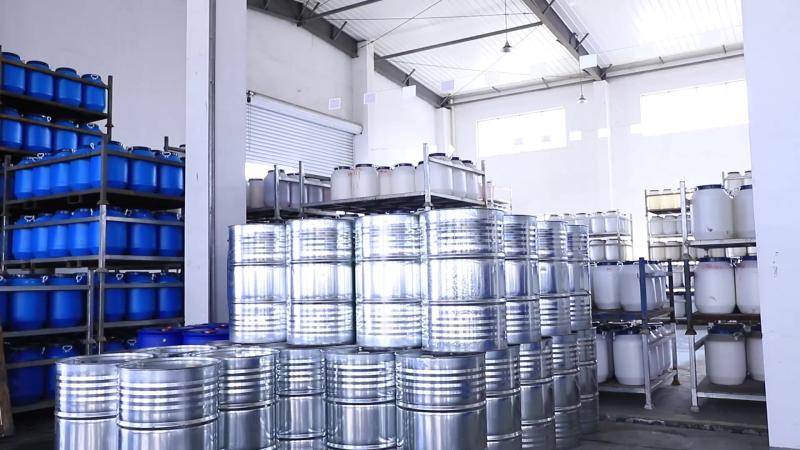Polyetheramine stands at the forefront of innovative chemical compounds widely utilized across multiple industries worldwide. As a specialized amine-functionalized polyether, polyetheramine exhibits unique chemical properties, making it a vital component in various manufacturing processes, particularly in epoxy curing, polyurethane production, and advanced resin formulations. Its versatility stems from the presence of reactive amine groups attached to flexible polyether backbones, enabling enhanced reactivity, adhesion, and flexibility in end-use applications. The steadily growing demand for high-performance materials in automotive, construction, coatings, and adhesives sectors continues to bolster the significance of polyetheramine in global chemical supply chains.
Key Chemical Characteristics Defining Polyetheramine Performance and Versatility
Polyetheramine are characterized by the combination of amine functional groups with polyether chains, typically derived from the reaction of amines with polyether glycols such as polypropylene glycol or polyethylene glycol. This chemical structure offers outstanding features, including low viscosity, excellent solubility in various solvents, and multiple reactive sites facilitating crosslinking with epoxides and other polymers. The molecular structure can be tailored by varying the length of the polyether chain or the nature of the amine group, which allows customization for specific mechanical properties like flexibility, toughness, or adhesion strength. Additionally, polyetheramines demonstrate thermal stability and resistance to hydrolysis, which supports their use in harsh environments and diverse industrial conditions.
Because of their reactive amine groups, polyetheramines act as curing agents in epoxy resins, improving the mechanical strength, chemical resistance, and overall durability of coatings and adhesives. Furthermore, when incorporated in polyurethane systems, they help in producing materials with superior elasticity, enhanced abrasion resistance, and improved moisture tolerance. These intrinsic chemical properties have cemented polyetheramine’s position as a fundamental ingredient in the production of high-quality polymeric materials.
Varied Industrial Applications Driving the Demand for Polyetheramine Globally
The widespread application of polyetheramines cuts across several key industries, influencing the global demand dynamics significantly. In the coatings industry, polyetheramine-based epoxy systems are extensively used for protective coatings in automotive, aerospace, and industrial machinery due to their rapid curing functionality and excellent adhesion to substrates. Construction applications leverage polyetheramine-cured epoxy flooring systems offering durability and chemical resistance required in commercial and industrial environments.
In aerospace and automotive manufacturing, polyetheramines contribute to the development of lightweight composites with improved impact resistance and flexibility. These properties are critical for fuel efficiency and safety standards in vehicle design. Additionally, the electronics industry utilizes polyetheramine-cured resins for encapsulating semiconductor devices, ensuring protection from moisture and mechanical stress.
The adhesives market also benefits considerably from polyetheramines, where strong bonding between dissimilar materials is essential. The fast curing nature and robust bonding capability make polyetheramine-containing adhesives preferred choices in packaging, woodworking, and assembling delicate equipment. The steadily expanding application base across diverse sectors ensures consistent growth and increased exploration of new polyetheramine derivatives for enhanced performance.
Navigational Insights into Recent Market Research Reports on Polyetheramine Trends
Comprehensive market research reports focusing on polyetheramine provide intricate analyses of current trends, future opportunities, and competitive landscape insights. Detailed segmentation covering product types, end-use industries, and geographic regions forms the backbone of these research findings. Such reports highlight emerging innovations in polyetheramine chemistry, shifts in raw material availability, and regulatory impacts shaping production practices and product formulations.
For professionals seeking a deep dive into market trends, accessing detailed industry reports helps in aligning strategic objectives with evolving demand patterns and technological advancements. These publications frequently explore supply chain dynamics, forecast growth trajectories, and elucidate major market players’ strategic movements. By consulting these research insights, investors, manufacturers, and distributors can navigate the polyetheramine market effectively, enabling informed decision-making and optimized business strategies.
Transactional Aspects and Commercial Availability of Polyetheramine in Global Markets
Polyetheramine is commercially available in various molecular weights and functional configurations tailored to specific industrial needs. Typical purchasing involves direct engagement with chemical manufacturers or authorized distributors who supply bulk quantities for industrial-scale applications. Pricing often factors in purity levels, chain length, and volume ordered, with larger contracts typically benefiting from economies of scale.
In terms of procurement, polyetheramine is supplied in liquid or molten form, requiring specialized handling and storage to preserve its reactive nature. Industry buyers focus on sourcing grades that comply with stringent quality standards and regulatory norms, ensuring compatibility with downstream manufacturing processes. The global distribution network for polyetheramine encompasses North America, Europe, Asia-Pacific, and emerging markets where industrial growth stimulates increased demand for advanced chemical intermediates.
Strategic partnerships and supply agreements play vital roles in securing a steady flow of polyetheramine, especially amid fluctuating raw material prices and geopolitical uncertainties impacting chemical trade. The commercial landscape continues to evolve with innovations in sustainable production methods and the rise of bio-based polyetheramine alternatives aimed at reducing environmental footprints.
Get this Report in Japanese Language: ポリエーテルアミン
Get this Report in Korean Language: 폴리에테르아민
Read More Articles Related to this Industry
The Ultimate Paint Cans Guide: Types, Sizes, & Uses Explained
About Author:
Money Singh is a seasoned content writer with over four years of experience in the market research sector. Her expertise spans various industries, including food and beverages, biotechnology, chemical and materials, defense and aerospace, consumer goods, etc. (https://www.linkedin.com/in/money-singh-590844163)
